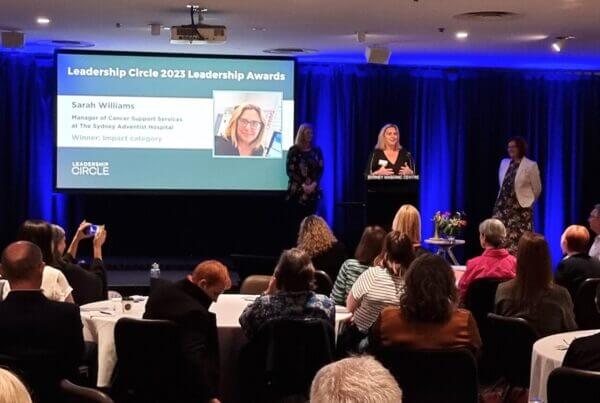The Power of Team Coaching
Coaching is a way to fast-track growth and development, unlocking potential, clarifying goals, and building self-awareness. It’s a powerful tool used by the world’s most successful individuals.
Let’s pause for a moment to talk about that last word – individuals. When we think about coaching, we nearly always think of individual career and professional development. We know that professional athletes, entrepreneurs, and business leaders have coaches to help them grow, learn, overcome challenges, and become the very best, highest-performing versions of themselves.
So, why would we not want the same for our teams?
Similarly to executive coaching developing executives, team coaching develops teams. Team coaching provides deep insights into team dynamics and can bring about powerful positive change in the whole system, not just the individual. This is where the magic lies and what we’re most passionate and excited about at The Karuna Collective.
A Team Coaching True Story
Recently, I was asked by a client to come in and ‘fix’ a CFO whose disruptive behaviour was holding the executive team back from achieving their strategy. His low emotional intelligence (EQ) and penchant for exerting power and control meant that, as the holder of the purse strings, things were done his way or not at all.
I was asked to coach the CFO, helping to resolve his challenges, and – it was hoped – reducing the disruption to the team so they could move forward and achieve their goals.
The first step was to sit down with the Chief Executive to discuss the issue. I asked, “How long has this been going on?” Surprisingly, the answer was two years, as long as the CFO had been working there. How had the CFO been getting away with this for so long?
The reasons provided will sound familiar if you’ve ever worked in a dysfunctional team. This executive team did not like conflict. They let the dysfunction, caused by the CFO’s behaviour, to fester in private conversations and allowed his demands to drift and undermine his decision-making outside of the meeting room. They made space and worked around his behaviours, trying to get the job done in spite of the disruption.
While these actions obviously weren’t resolving the issue, it’s extremely difficult to challenge one team member’s behaviour when there aren’t mutually-agreed standards which allow the team to self-regulate; and feel safe in doing so. It’s even harder when the team is not aligned on priorities and avoids having challenging conversations.
In my opinion, if a group is looking for one person to change, that’s a warning sign that the person has been acting that way without resolution for a long period of time. Although individual executive coaching is valuable, team coaching and collective leadership development allows for faster, more effective, and more powerful change.
Team Coaching Process
How does team coaching work? What’s the process we follow? At Karuna Collective, we follow a defined, proven methodology that draws on The Leadership Circle’s Collective Leadership Assessment™. This provides a robust evaluation of where the team’s collective leadership capabilities and effectiveness are sitting, compared with where they would like to be. Here’s how it flows:
| Step | Team Coaching Activity |
|
1.Individual interviews with team members |
The first step is to sit with the individual members of the team, conducting detailed interviews to understand all the different perspectives on the current group dynamic.
|
|
2. The Leadership Circle Collective Leadership Assessment |
At this stage, we identify the gap between the team’s current collective leadership capabilities, and where they aspire to be. This highlights opportunities for development and helps us focus on our team coaching plans. |
|
3. Debrief the Leadership Circle Collective Leadership Assessment |
We debrief the results of the Collective Leadership Assessment and surface feedback on the findings as a group. This is always an extremely interesting and valuable session. |
|
4. Determine collective leadership development areas |
Here’s where the rubber hits the road, as the group makes decisions on the key collective leadership development areas we’ll focus on over the coming weeks and months. Where do we need to move the dial, as a priority? |
|
5. Coaching in executive meetings |
Coaching in team settings to redesign conversations, build awareness of team dynamics and individual roles. This is all about coaching the group to build new collective leadership skills. |
|
6. Reassess against the Collective Leadership Assessment |
Over time, we reassess and reevaluate using The Leadership Council Collective Leadership Assessment. How has the team grown and progressed? Where is there still room for improvement? What new dynamics have emerged? This is the test and refine phase. |
How is Team Coaching Done?
We’ve covered what we do in collective leadership coaching, but how do we do it?
Group coaching encompasses many of the skills of executive coaching, but it also requires some additional capabilities. At the Karuna Collective, we specialize in collective leadership coaching. Our practice involves inquiry, asking questions, deep listening and power dynamic observation. With executive teams, we work on conflict resolution, decision-making when there are differences of opinion, surfacing alternative perspectives, and leveraging strengths.
The Happy Ending
You may be wondering what happened to the team with the challenging CFO. Well, as with all good stories, there’s a happy ending.
Working together with the team, we were able to build a more productive group dynamic, where the challenging voice of the CFO was seen as a strength; but there was more honesty and adaptability in the team to resolve conflict, disputes, and differing opinions.
The CFO learned to adapt his style to better suit the team, as they all developed together through the work at hand. The whole team worked to notice changes in the dynamic and course-correct if unproductive behaviours were arising.
Need Help With Team Coaching?
Peta Karunaratne is a Leadership Circle Certified 360 and Collective Leadership Assessment Practitioner. If the story above sounds familiar, the Karuna Collective can help. Whether you’re after group coaching, executive team coaching or collective leadership development, feel free to get in touch for a commitment-free discussion about your situation and your needs.
Peta is an in-demand executive coach, CHRO for hire and strategic facilitator who works with her clients across Australia, the UK, North America and New Zealand to deliver holistic organisational transformations that achieve commercial results and deliver a positive impact in the world. Visit The Karuna Collective to learn more.



